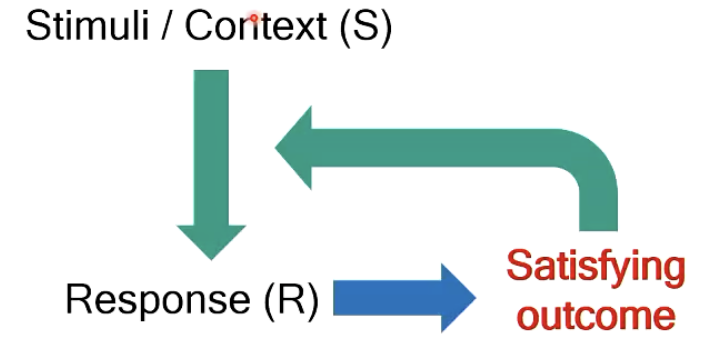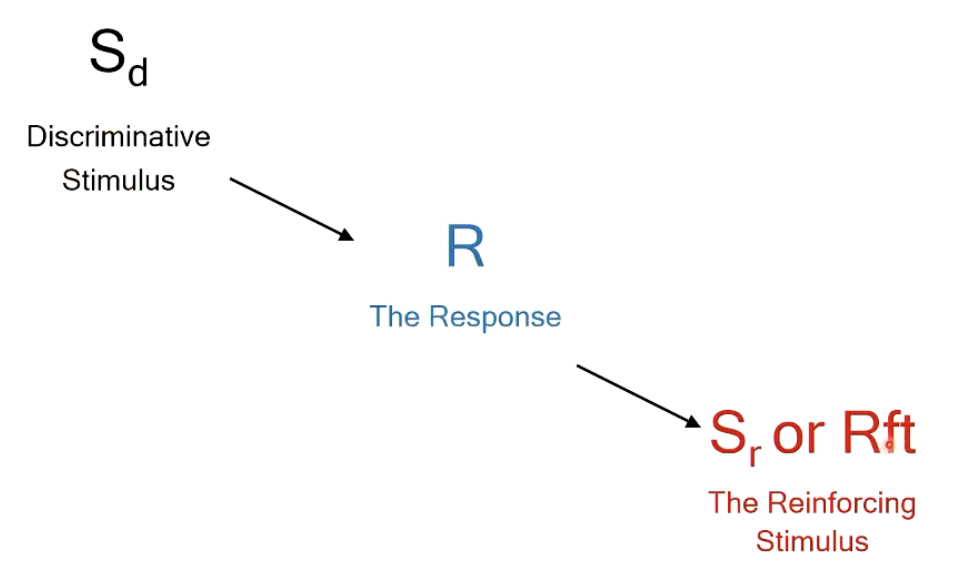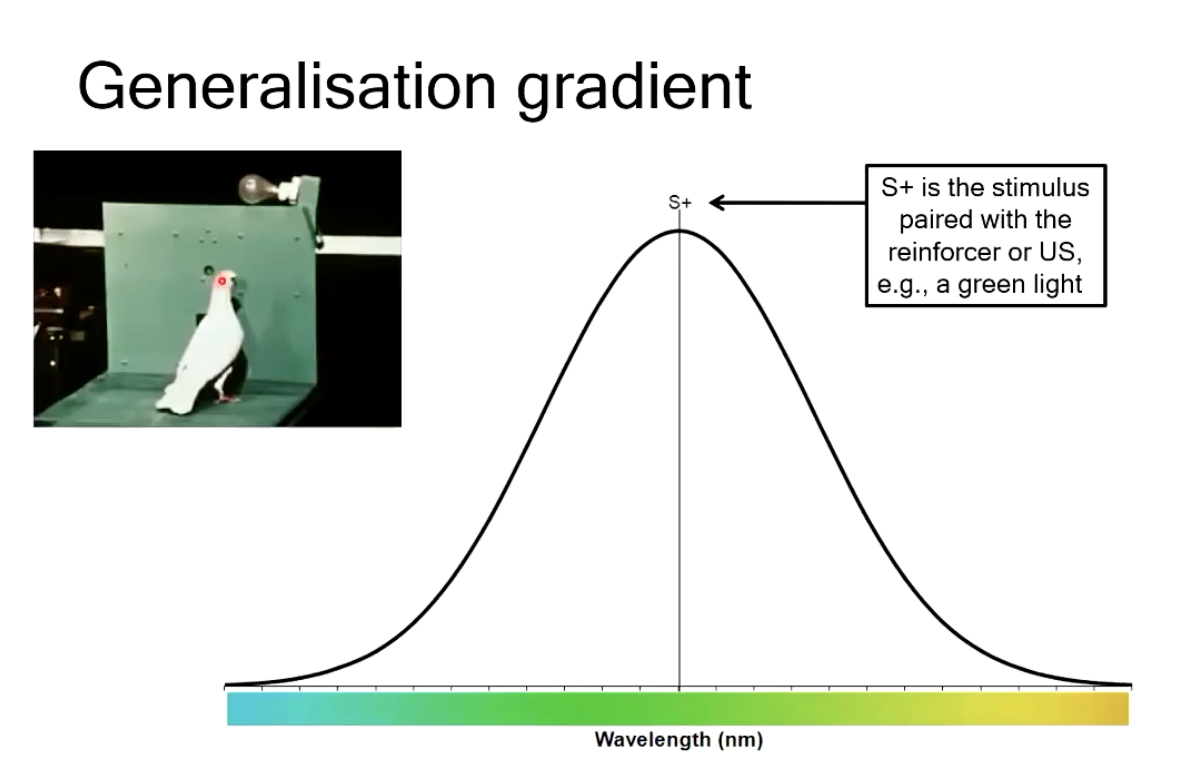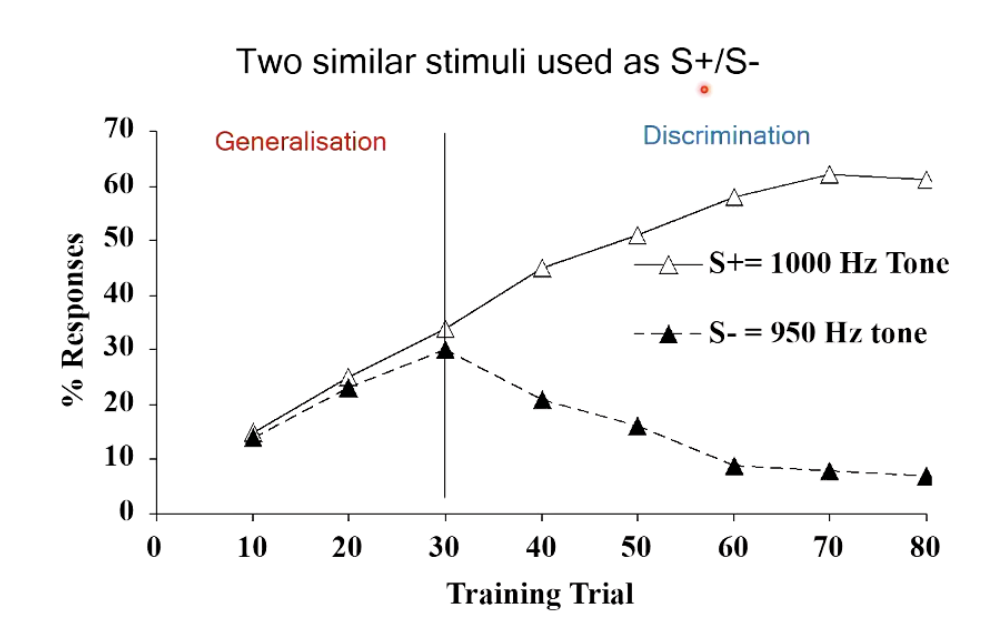Learning and Motivation Lecture 3 - Stimulus Control
1/11
There's no tags or description
Looks like no tags are added yet.
Name | Mastery | Learn | Test | Matching | Spaced |
|---|
No study sessions yet.
12 Terms
Thorndike’s Law of Effect
satisfying outcomes “stamp in” the connection between the stimulus and the response — increases the likelihood of particular behaviour
association grows as result of the reinforcement
so next time in presence of the stimuli/context — trigger this instrumental response.

Stimulus Response (S-R) Learning
instrumental behaviours (responses) are controlled by stimuli they are associated with
discriminative stimulus
Discriminative Stimulus
signal that an action will produce a consequence or outcome (e.g. peck or turn to the pigeon)
Skinner’s Tripartite Contingency - ABC
Antecedent
the stimulus controlling behaviour
Behaviour
what is the response being reinforced/punished?
Consequence
what is the immediate outcome of the behaviour

Difference between Thorndike and Skinner
Thorndike saw role of reinforcing stimulus as stamping in the S-R association
Skinner considered all 3 things as important he also assumed association can be learnt between the response and the reinforcing stimulus (outcome)
Stimulus Control Theory
our decisions and actions are controlled by S-R associations we have learned in the past (cf. experience of free will)
if we could know an orgs entire learning history — should be able to predict behaviour based on the stimuli present
very nurture focused
Generalisation & Discrimination
every instance we encounter (a stimulus or event) is different
how is a previously learned response (in particular situation) transferred to a new but similar situation — e.g pig closing door
Generalisation
extent to which behaviour transfers to a new stimulus
Discrimination
extent to which behaviour does not transfer to a new stimulus
Factors important for stimulus control
1) How effective the S is learned about (learning-related)
basic conditions necessary for associative learning
true for classical and instrumental conditioning
2) How similar or different the S is to previously learned stimuli (performance-related)
behaviour in novel (but similar) situations
factors dictating generalisation and discrimination
Generalisation and “Little Albert” Study
fear conditioning study
set out to test generalisation of leaned fear in an infant
US: loud clanging noise
UR: fear/shock
CS: white rat
CR: fear elicited by the rat
Generalisation Gradient

Discrimination Learning
can be learned through training with different schedules of reinforcement
classical example:
high-pitched tone — Food US
low-pitched tone — no US
(US only contingent on the high tone and CR will differ)
instrumental example
in presence of high-pitched tone: Response —> Rft
in prsence of low-pitched tone: Response —> no Rft
reinforcement is contingent on the stimulus and response

Generalisation in humans
more complicated
physical attributes
semantic similarity
rules/analogies that link otherwise dissimilar events
Razran (1939) salivation study using students
words (CS) paired w food (US) — Salivation CR
Trained CS: Style, Urn, Freeze, Surf
Trained responses to
phonologically similar
semantically similar
More generalisation to semantically similar than phonologically
— humans generalise more on the basis of meaning